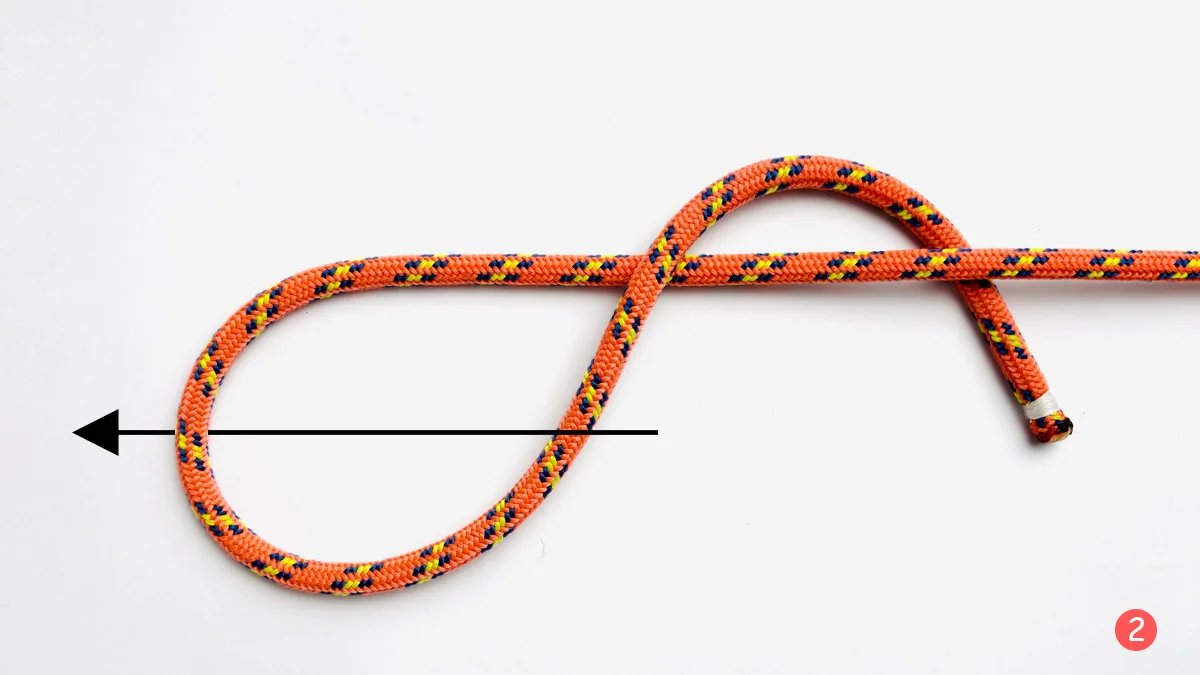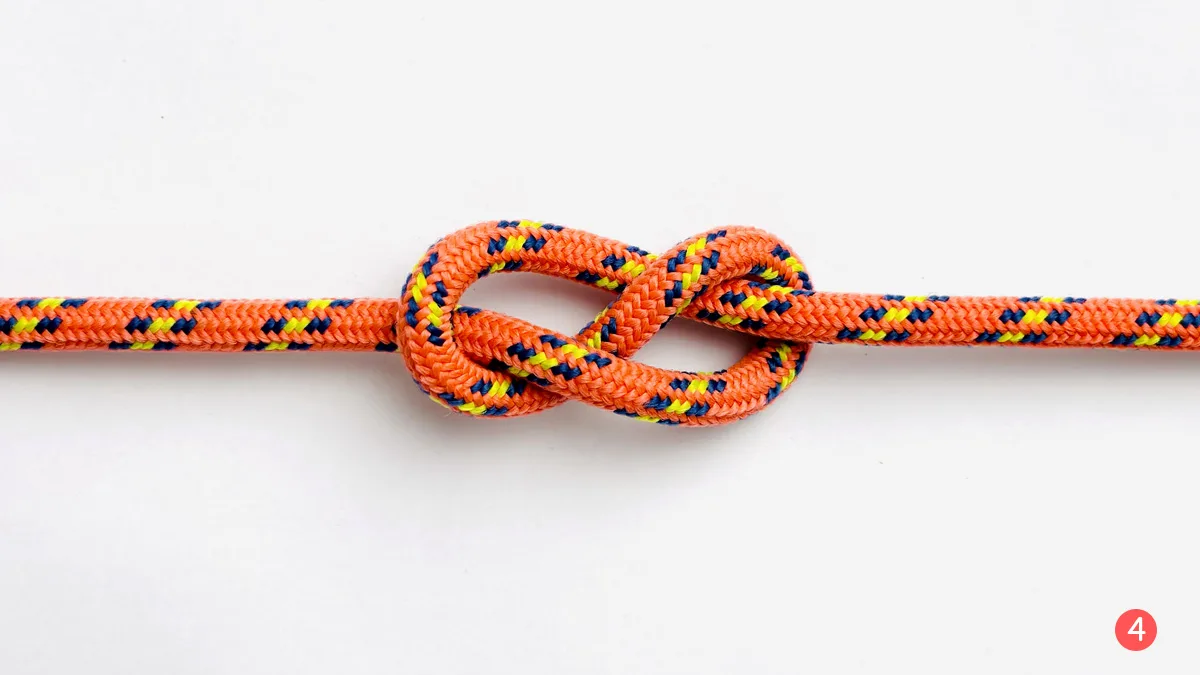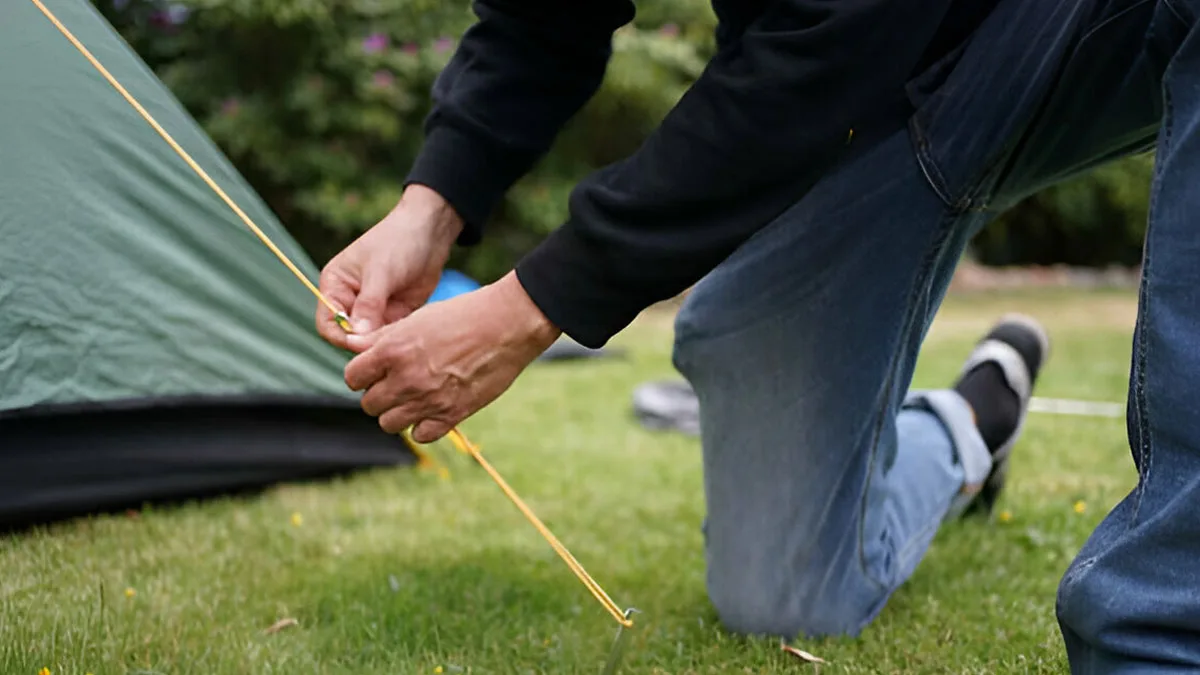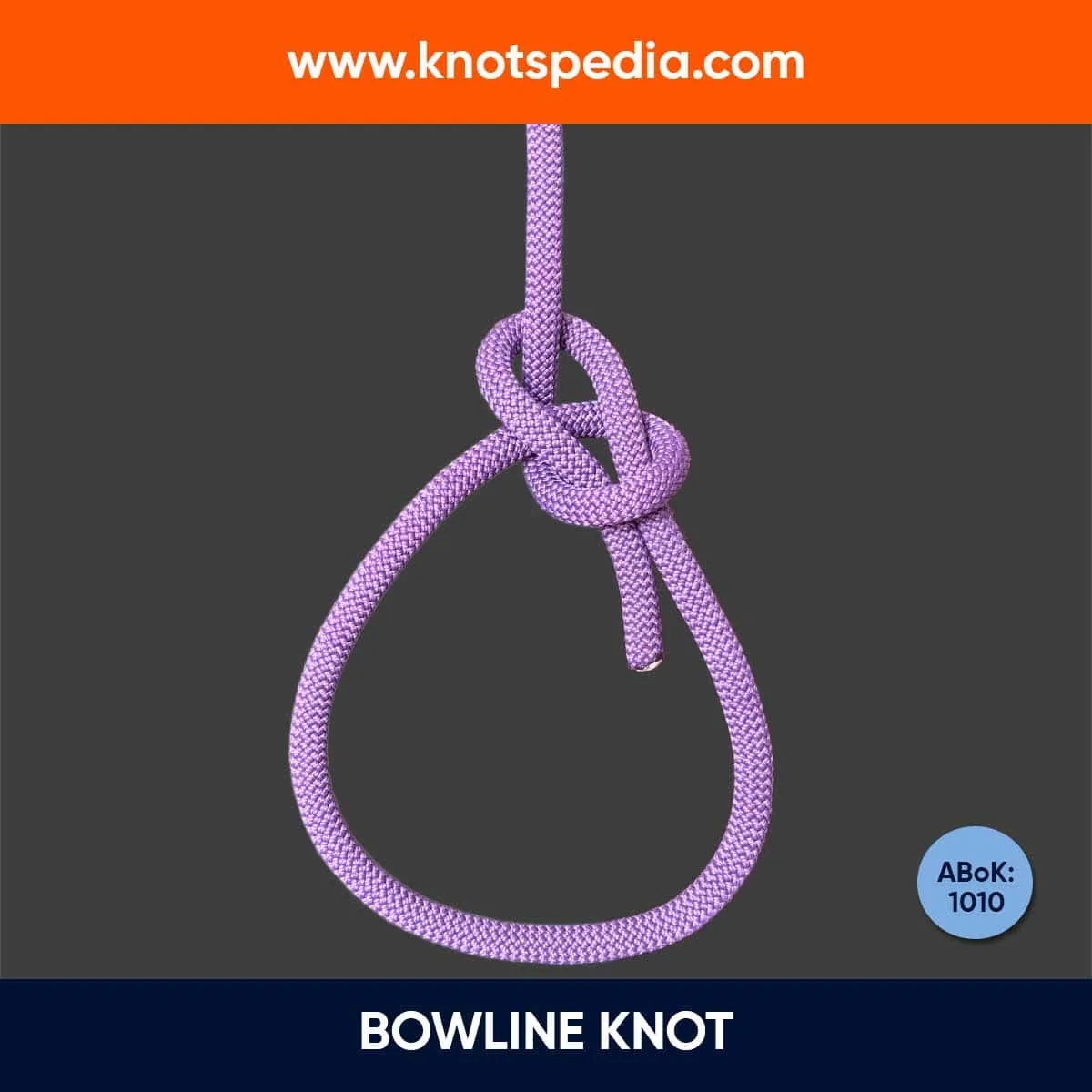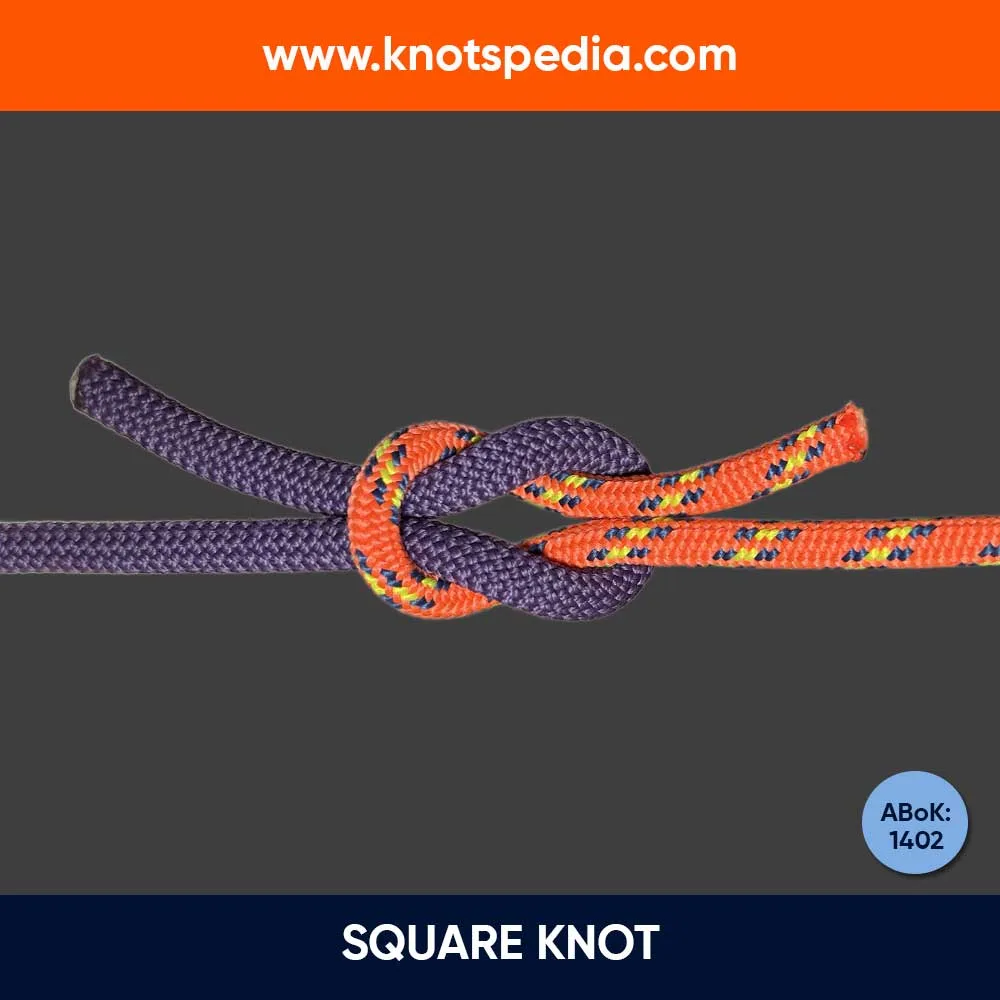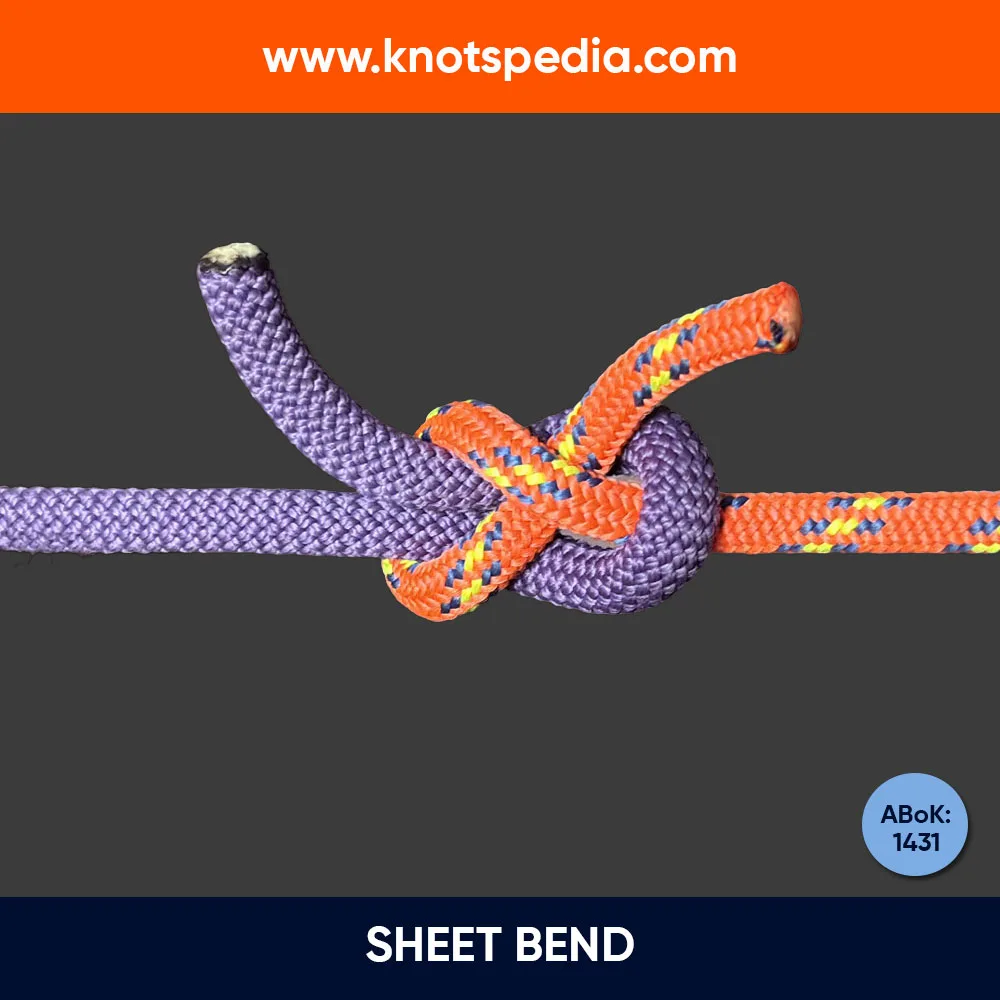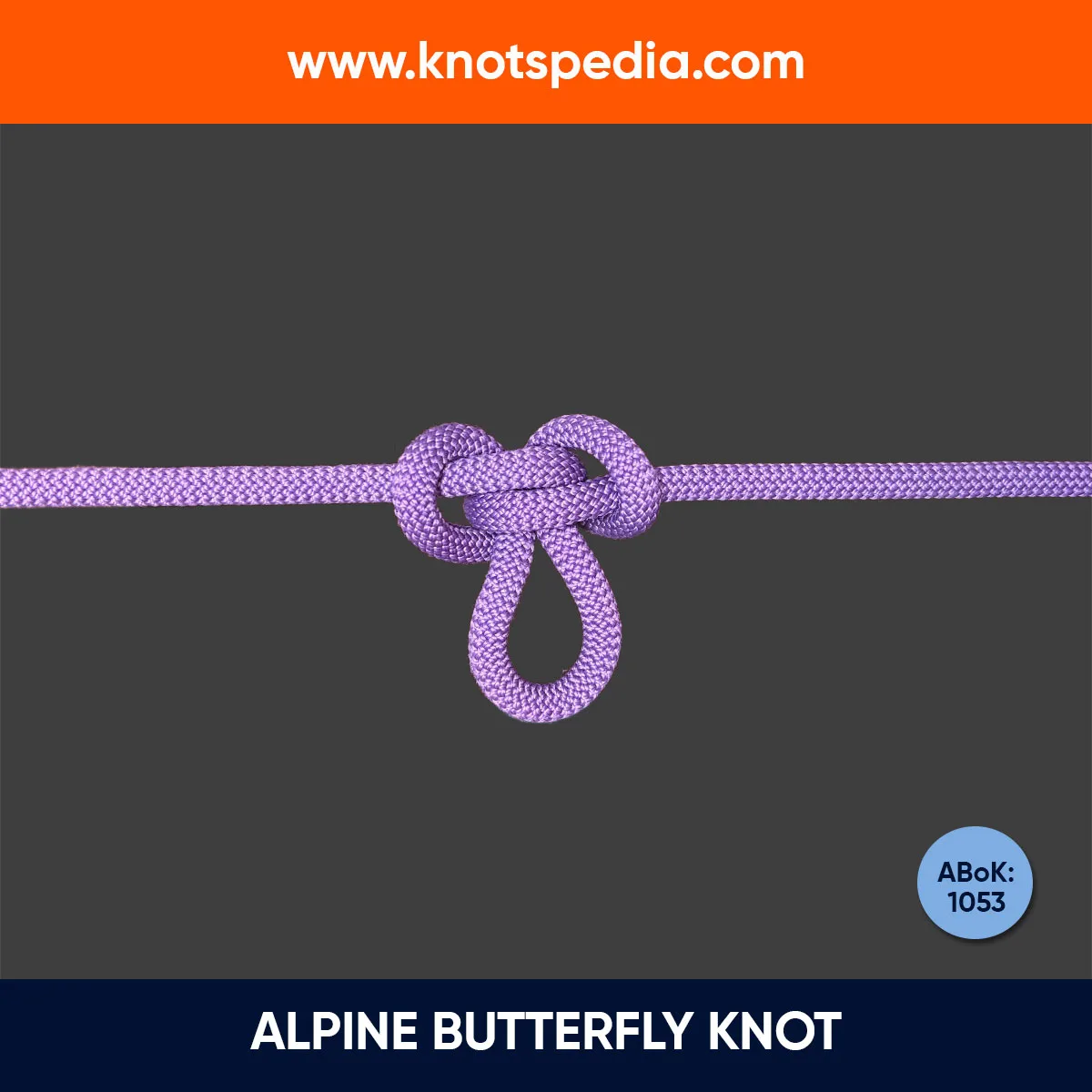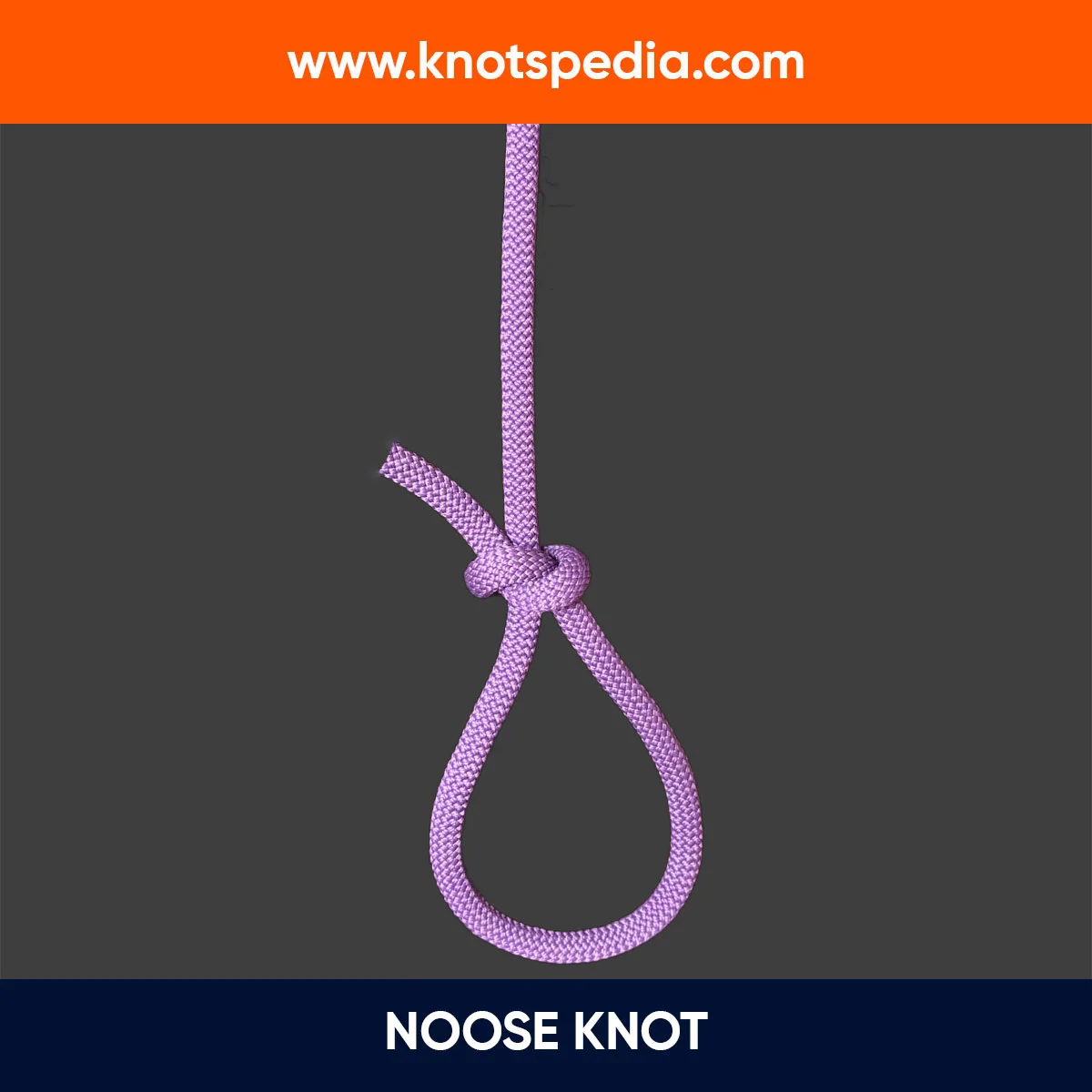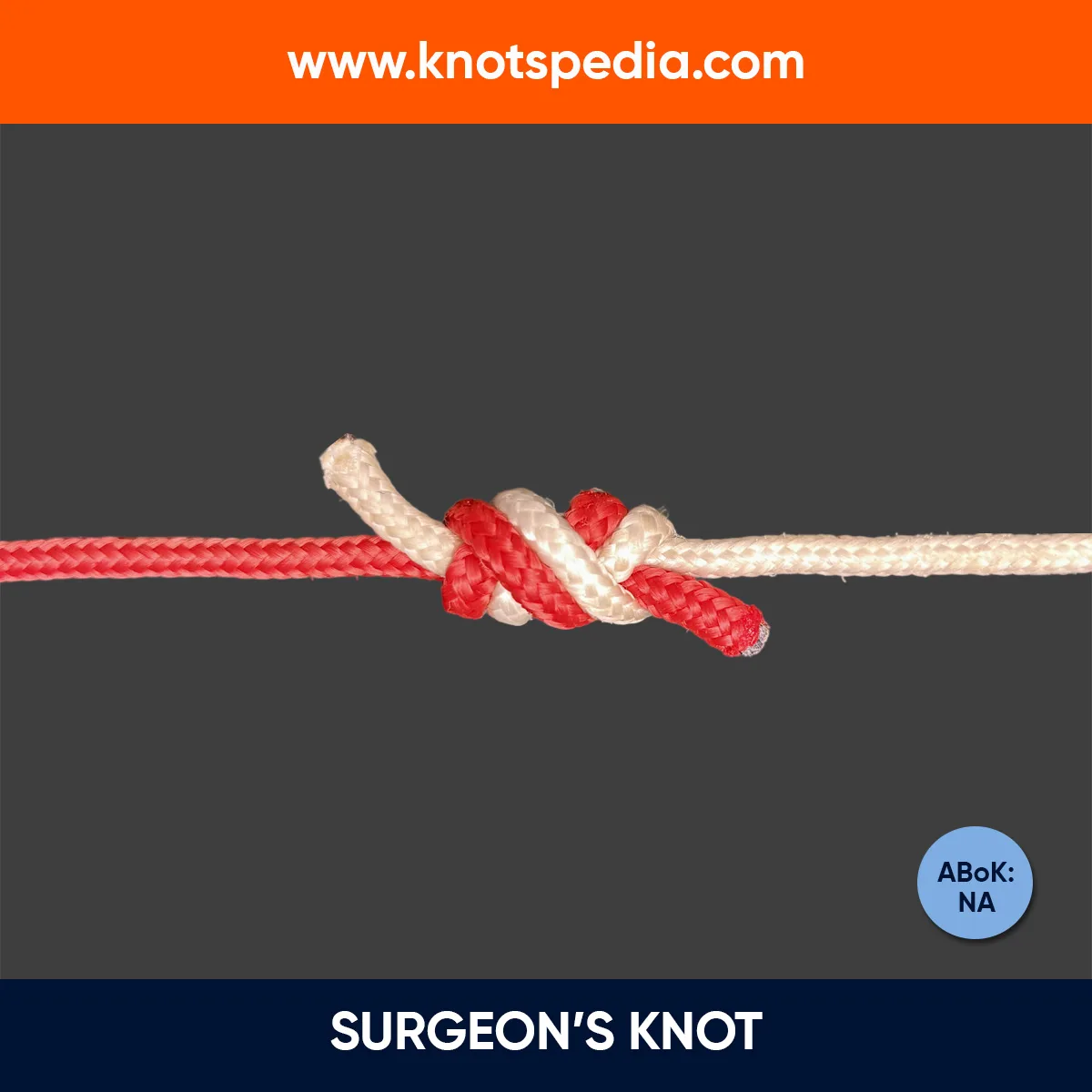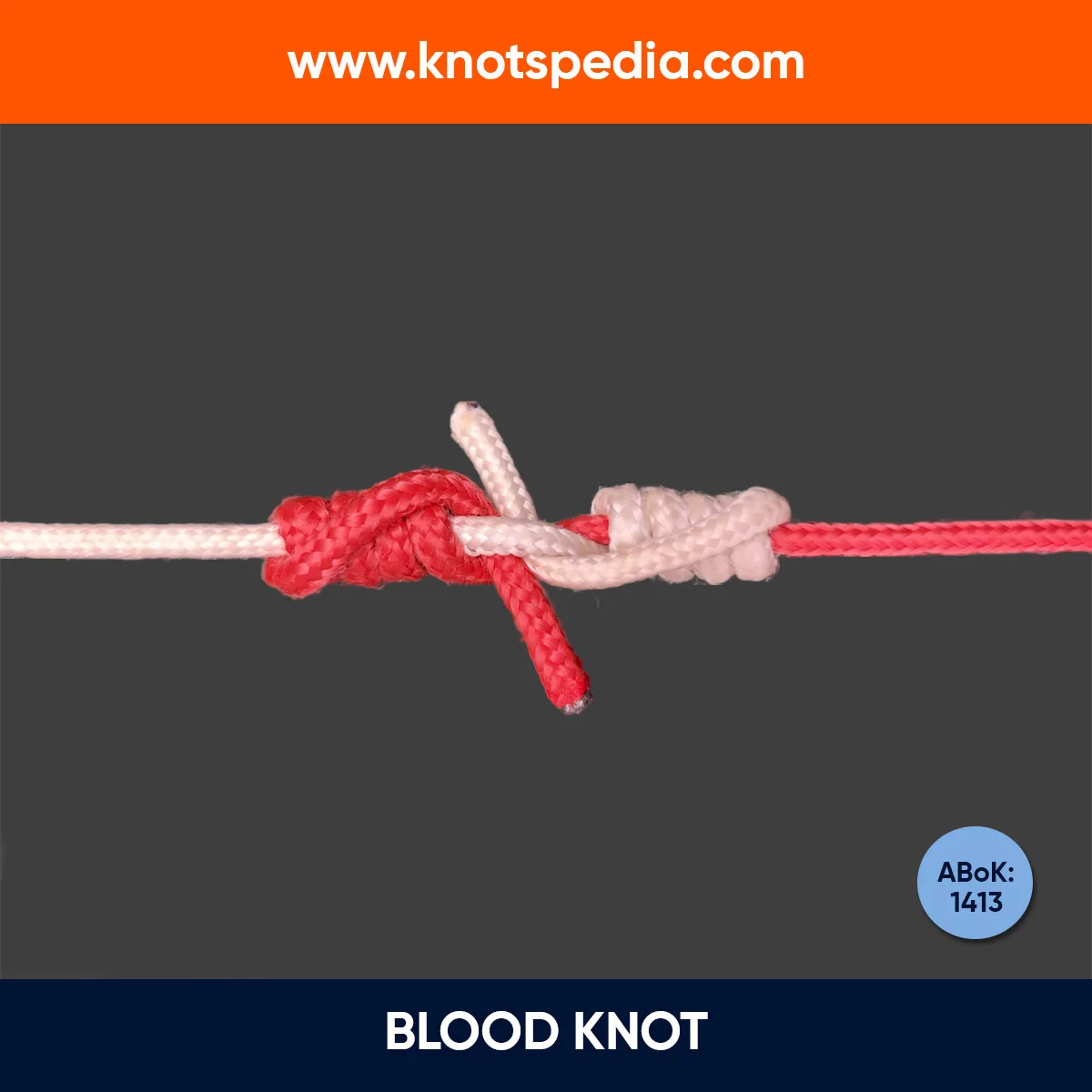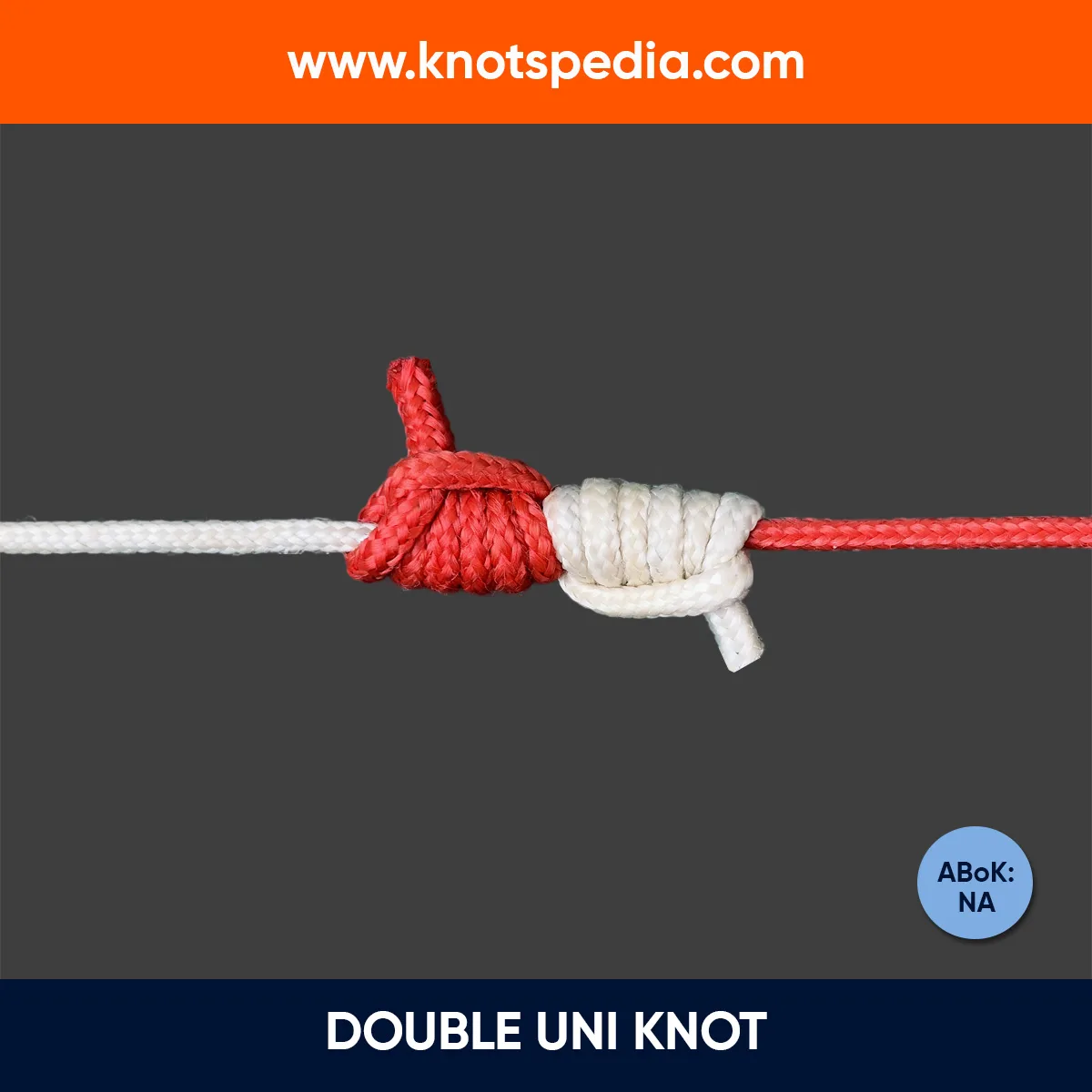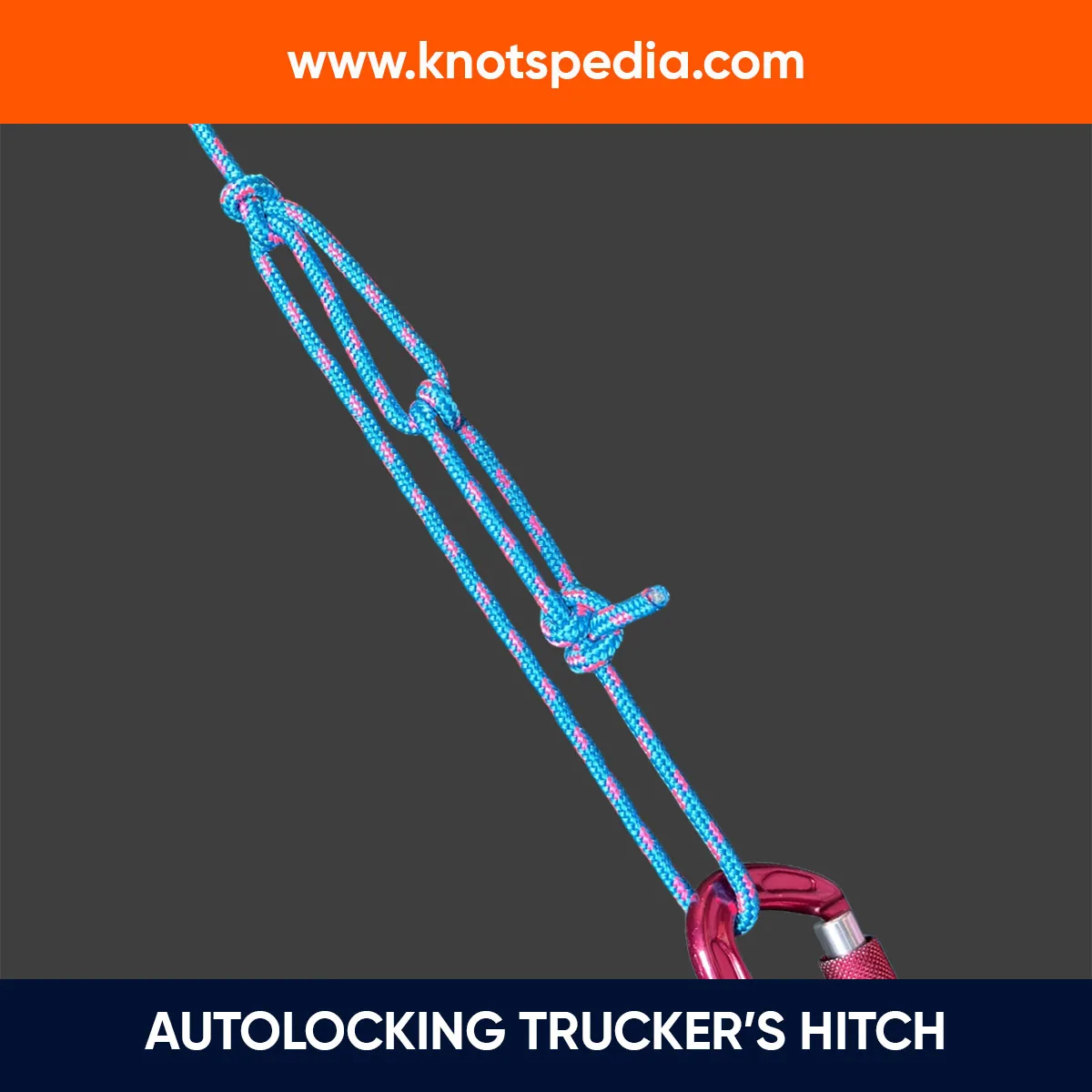The Figure 8 Knot is an easy-to-tie stopper knot that’s been around forever.
Sailors, climbers, scouts, and rescue personnel all trust it and for good reason.
It’s simple, solid, and one of the knots you’ll keep coming back to.
Let’s check this knot in detail.
Figure 8 Knot Details
Type: Stopper Knot
Other Names: Flemish knot, Savoy knot
ABoK Reference: #420, #520, #570
How to Tie a Figure 8 Knot
- Pass the working end over the standing part to create an Overhand Loop.
- Pass the working end under the standing part.
- Feed the working end back through the loop.
- Pull both ends to tighten the knot.
If you notice an “8” shape, you’ve tied this knot correctly.
To untie, push the ends towards each other. Once the knot starts wiggling, pull either end from the knot.
Figure 8 Knot Step by Step
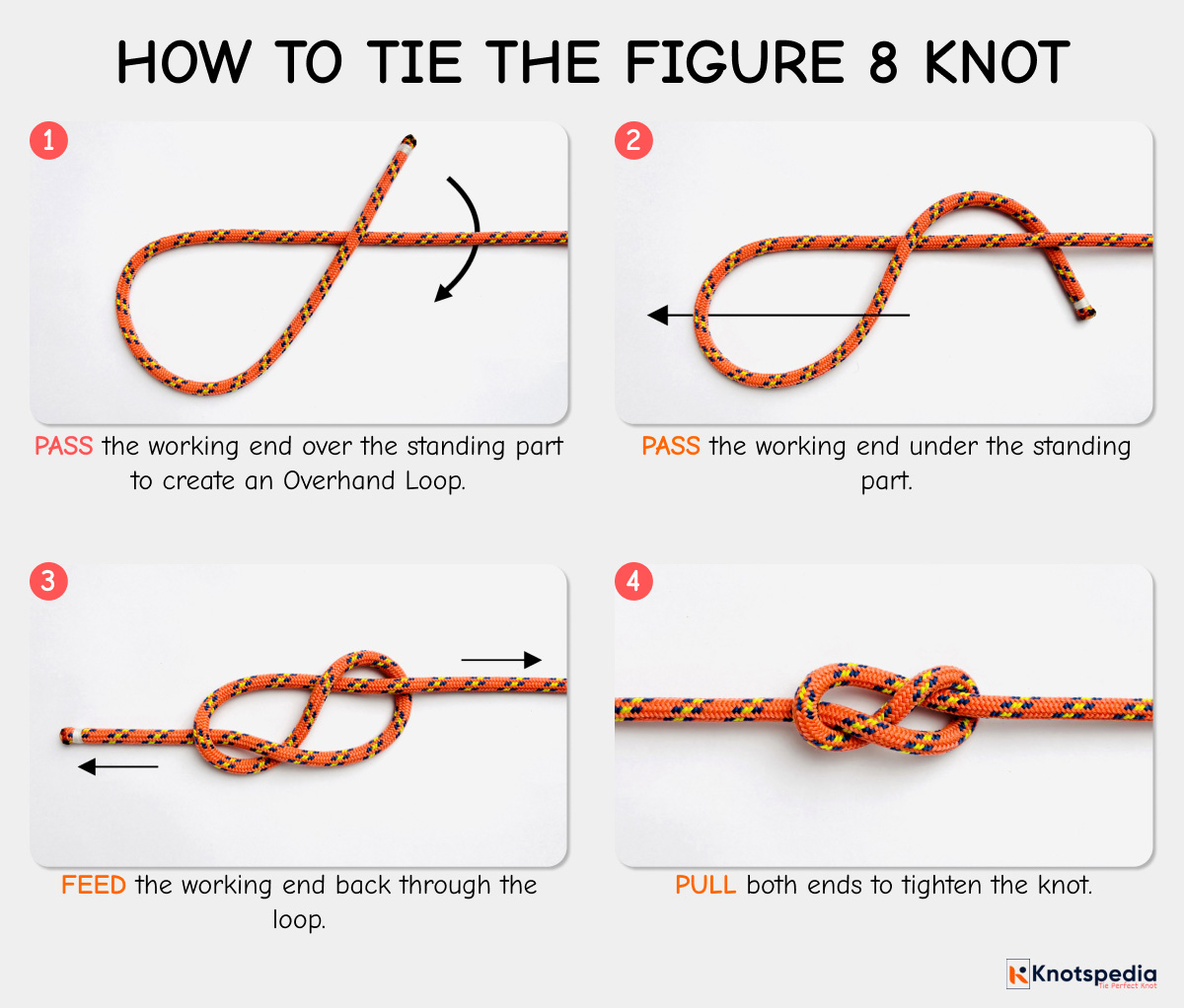
Pros & Cons
- Simple, easy to tie
- Easier to untie than the Overhand Knot
- Tendency to shake loose
Applications and Uses
- Sailing and Boating: It’s tied at the end of the sheets, halyards, or lines to prevent them from slipping out of a retaining device.
- Climbing: The Figure 8 Follow Through Loop is popular among climbers. It’s strong, easy to inspect before climbing, retains about 80% of the rope’s strength and can be untied easily after loading.
- Search and Rescue: Building anchors, hauling, and rappelling. The Figure 8 on a Bight and the Double Figure 8 knot are popular.
- Fishing: Connecting a hook or lure to the fishing line or creating an interconnected loop system.
Other Figure 8 Knots
The Figure 8 knot isn’t only a solid stopper knot, but it’s also the foundation for a whole family of knots, be it loop knots or bends.
Figure 8 on a Bight
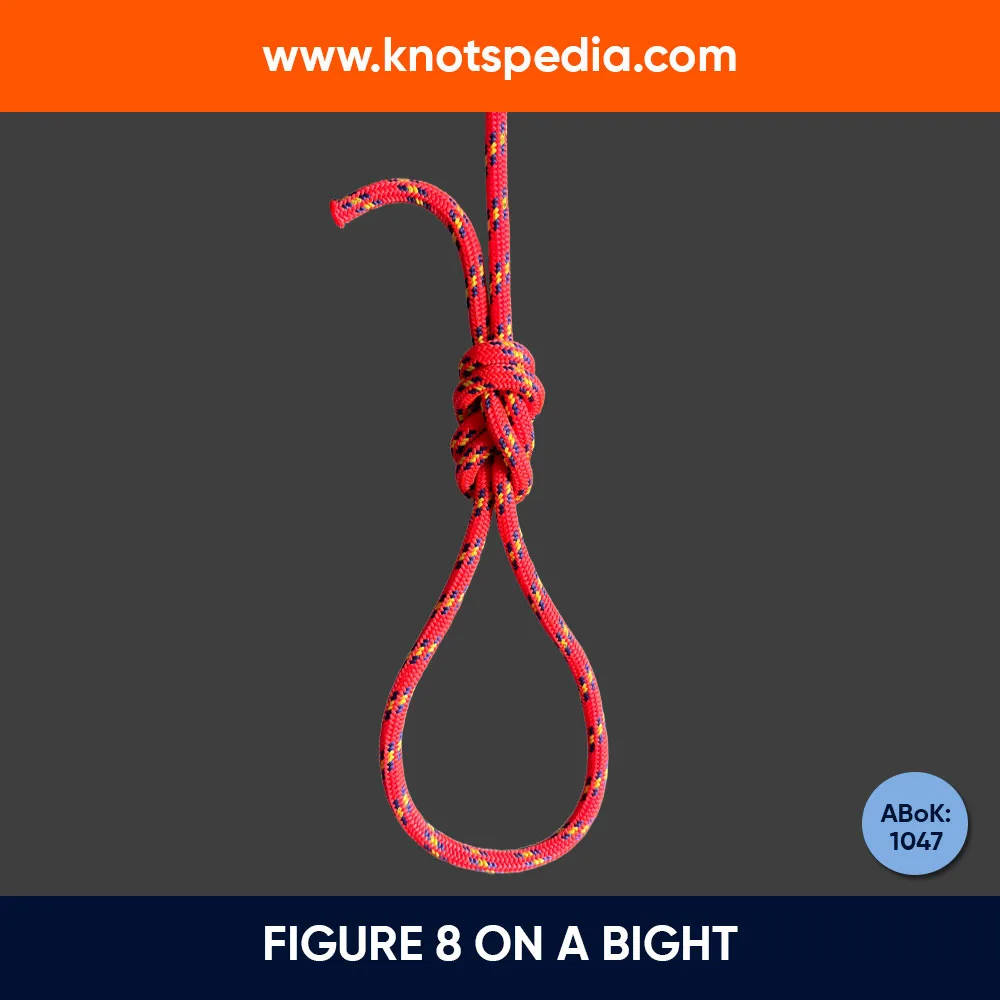
The Figure 8 on a bight creates a secure loop anywhere along the rope.
It is mostly used by climbers for setting up anchors.
But it can jam badly after multiple falls.
Figure 8 Follow Through Loop
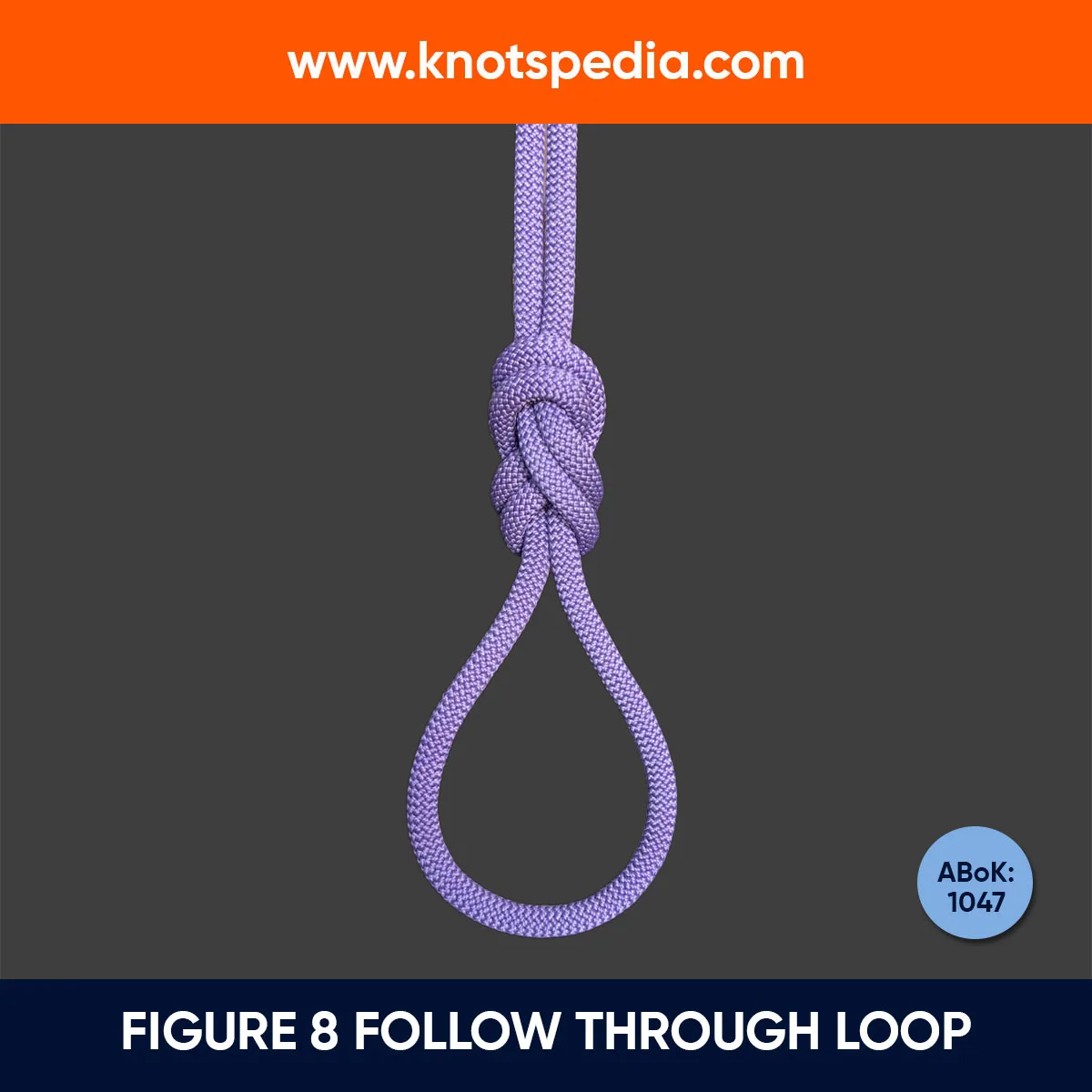
The Figure 8 Follow through loop looks similar to the Figure 8 on a Bight knot, but it’s tied entirely differently.
You tie a loose Figure 8 Knot, thread through your tie in points, and simply retrace the knot.
It’s popularly used as a standard tie-in knot for tying into a climbing harness.
Directional Figure 8
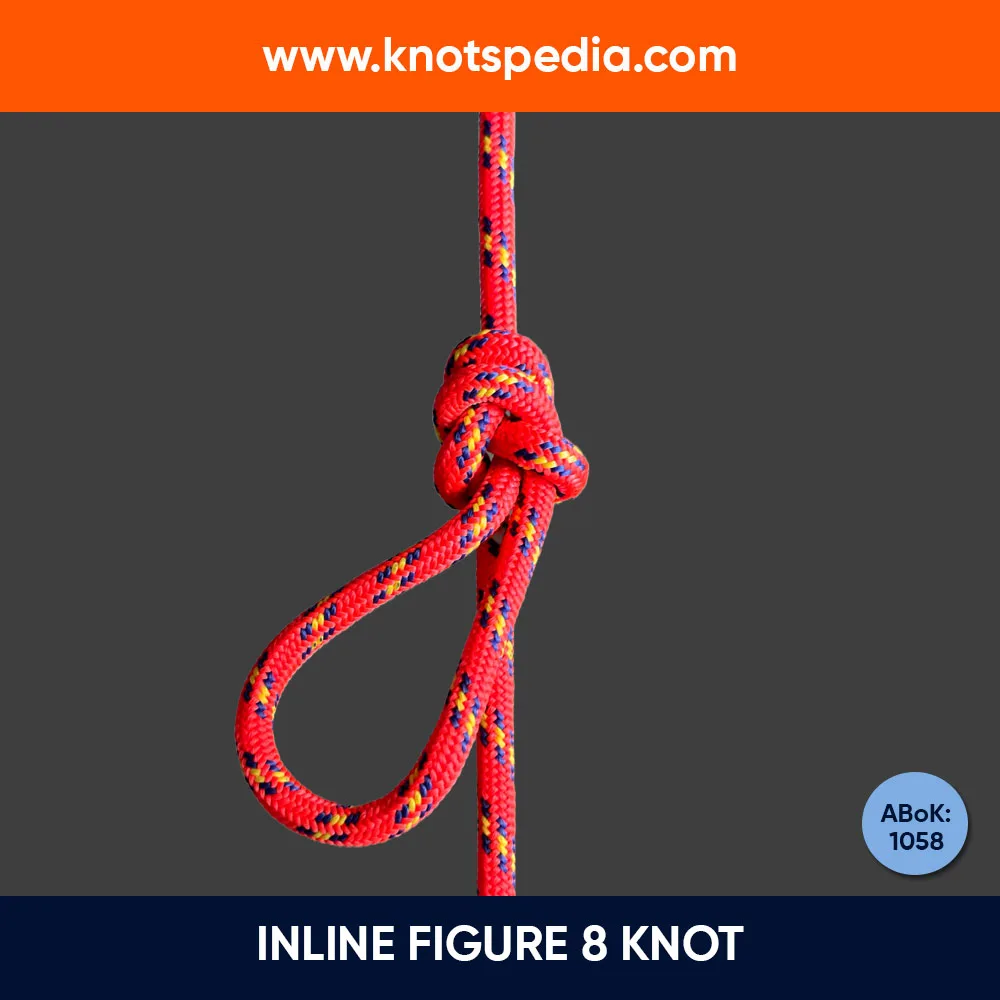
The Directional Figure 8 creates a loop in the middle of the rope and handles the tension in one direction only.
It’s fast and useful, but if you pull from the wrong side, it can collapse into a sliding loop.
That said, it’s used for handholds, footholds, and sometimes forms a loop for the Trucker’s Hitch.
Double Figure 8
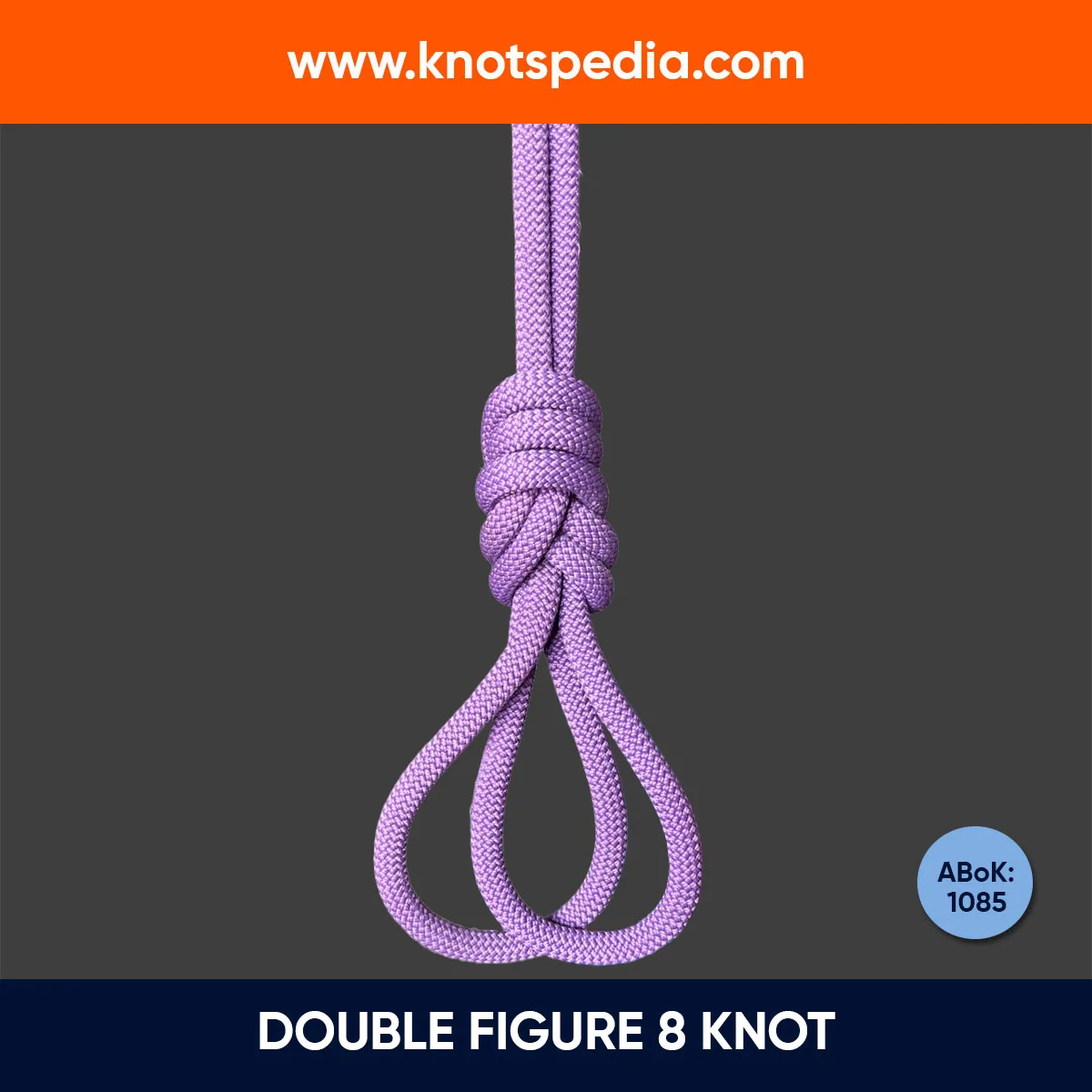
The Double Figure 8 Knot forms two side-by-side loops.
It’s mostly used in rock climbing for building anchors or making makeshift harnesses. In search and rescue operations, it’s used as a temporary seat.
Figure 8 Bend
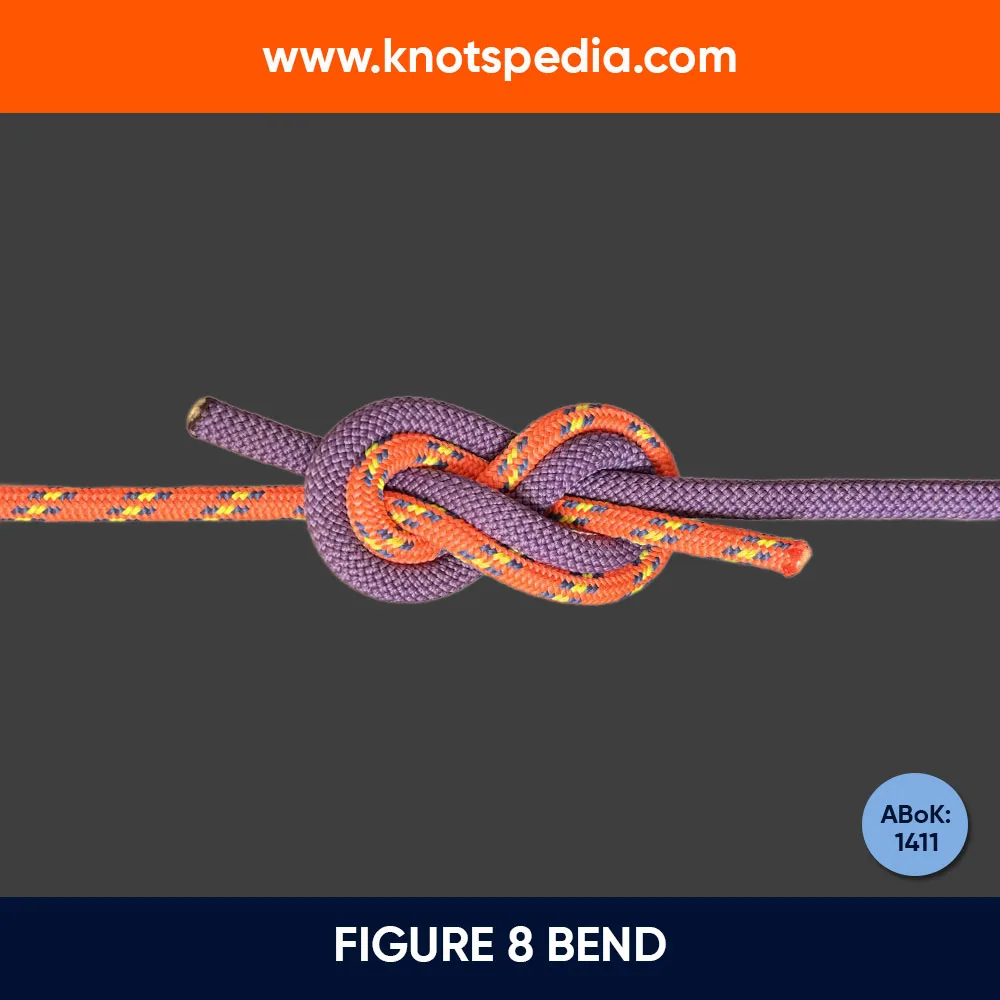
The Figure 8 Bend is used to join two ropes together.
It’s stronger than the Sheet Bend and easier to untie than the Double Fisherman’s Knot.
Just make sure you don’t confuse it with the “Flat 8 Bend.” That one’s is unsafe!
Figure 8 Knot vs. Other Stopper Knots
Now let’s talk about why people pick up the Figure 8 Knot as a stopper and where it falls short.
Overhand Knot
The Overhand Knot is one of the simplest stopper knots.
It tends to jam under load and can actually slip through some hardware.
The Figure 8 Knot is better in pretty much every way.
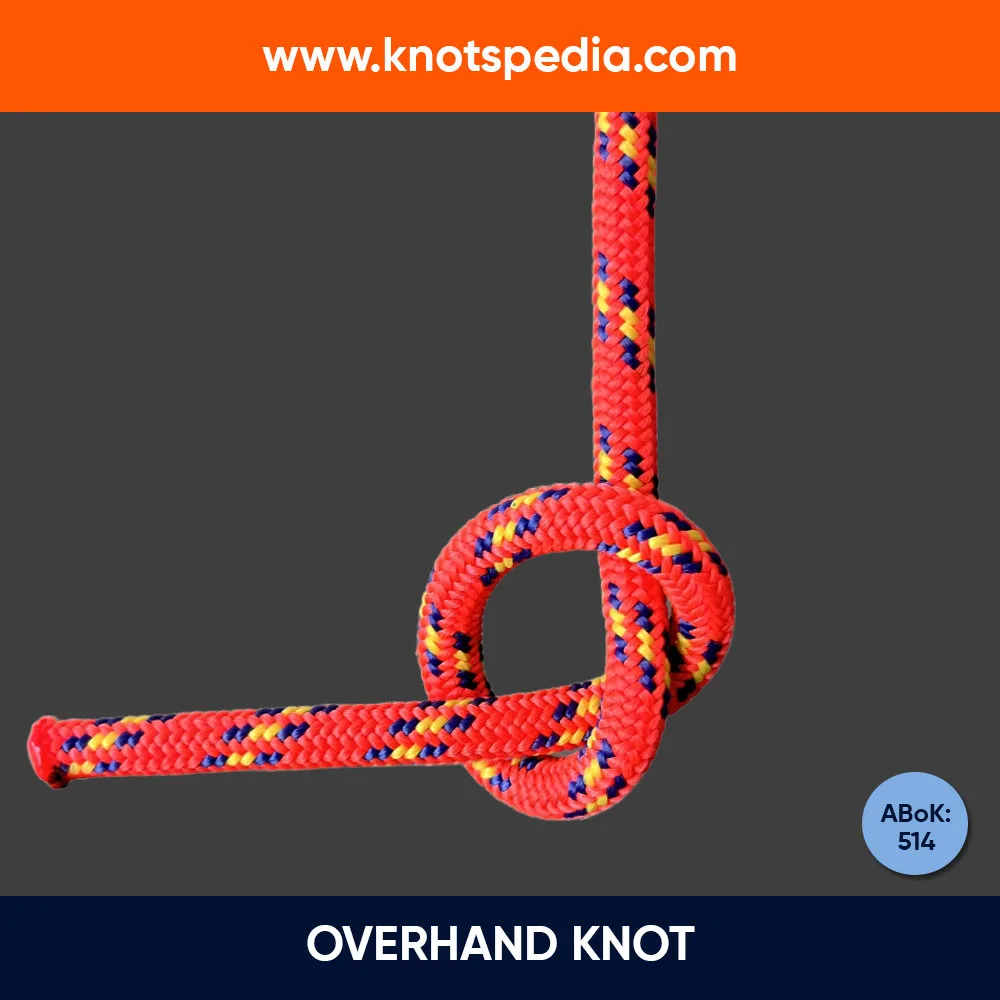
Double Overhand Knot
The Double Overhand Knot forms a moderately large stopper knot.
It’s more secure than the Figure 8 Knot, and climbers often use it to back up their tie-in knot.
But once it’s jammed, there’s no question about untying it.
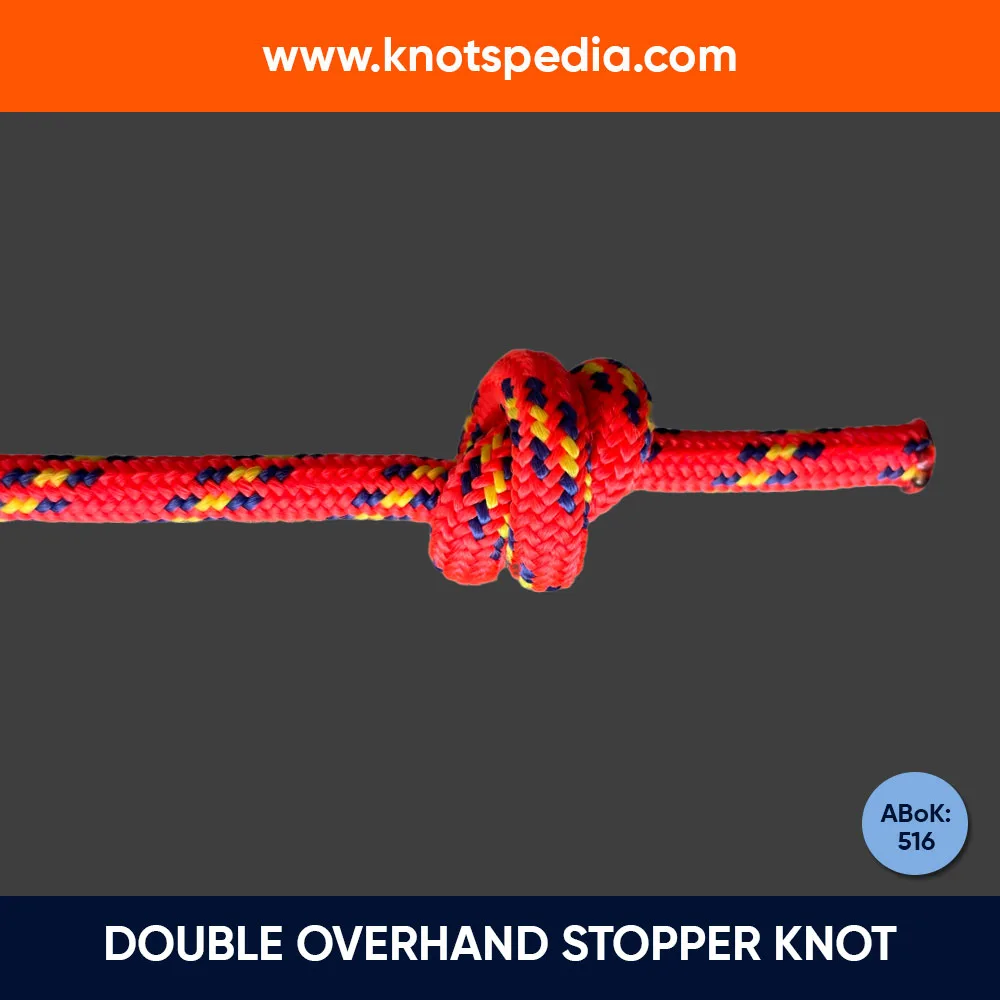
Stevedore Stopper Knot
The Stevedore Stopper Knot is tied similarly to the Figure 8 Knot with an additional turn around the standing end before the knot is tightened.
If you need a better stopper knot, try out the Stevedore Stopper.

Ashley Stopper Knot
The Ashley Stopper Knot is bulky, symmetrical, and less likely to shake loose.
It’s often used when a permanent stopper is needed, but it’s a little complex to tie.
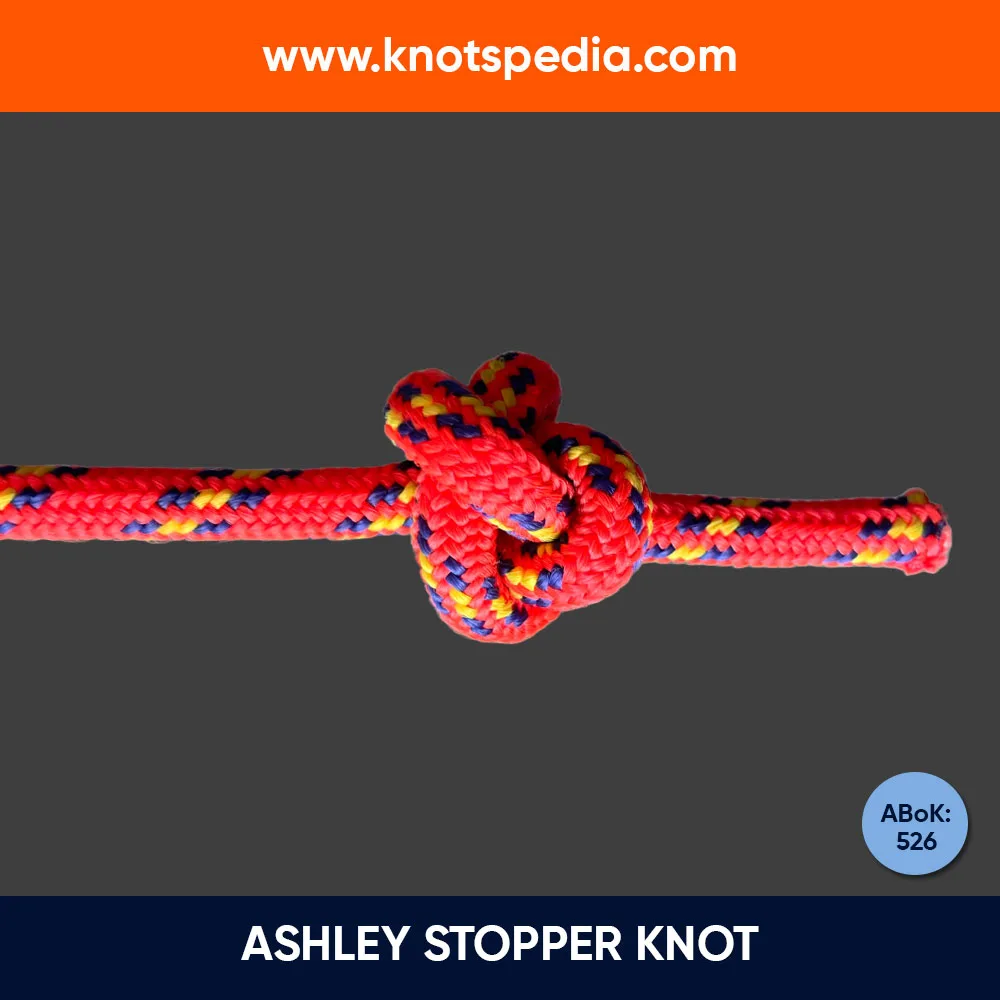
Estar Stopper Knot
The EStar Stopper Knot is a bulky stopper knot used with slippery ropes like Dyneema.
You won’t require this knot unless your rope is extra slippery.
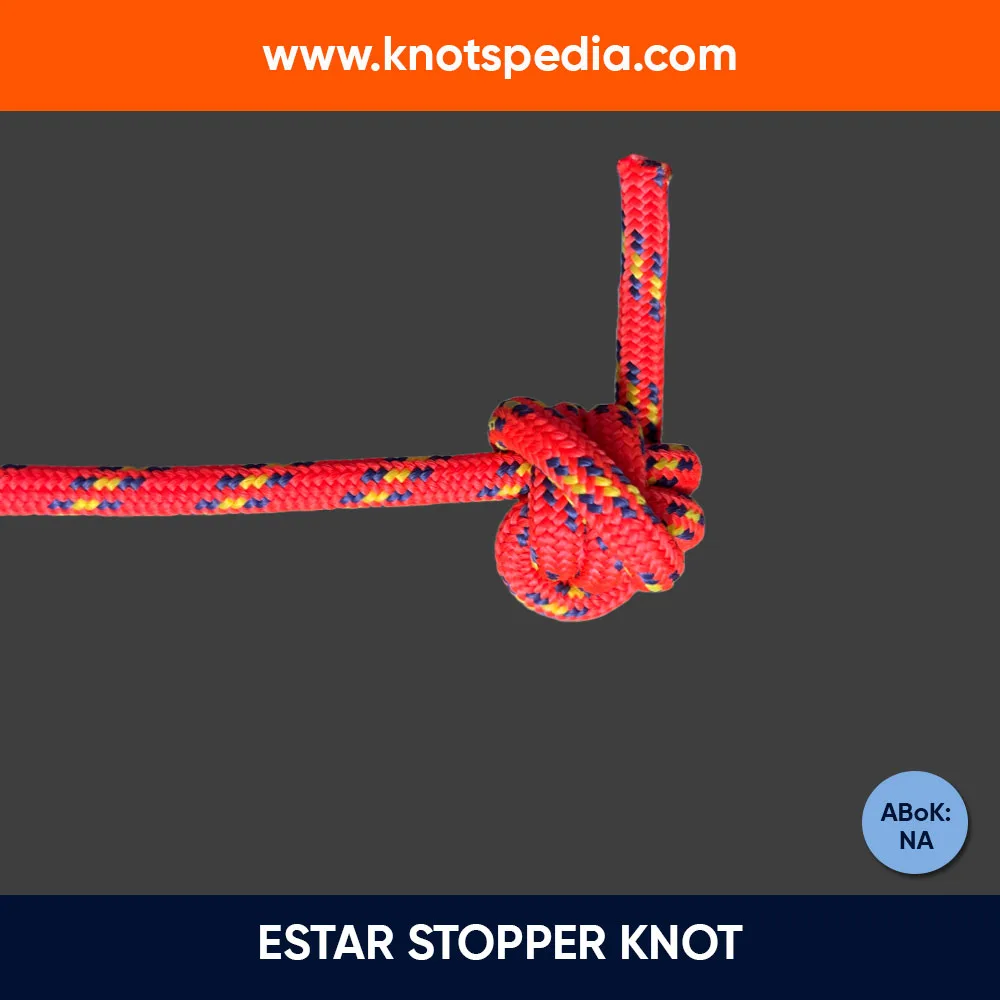
Which variation of the Figure 8 Knot do you prefer to use? Do let us know in the comment box below!

